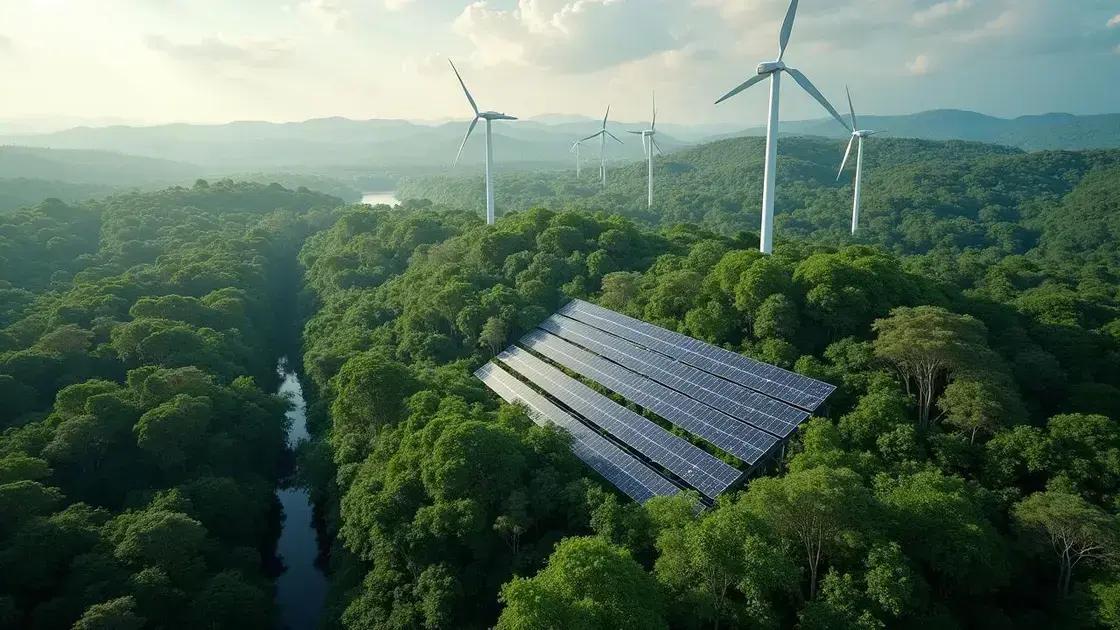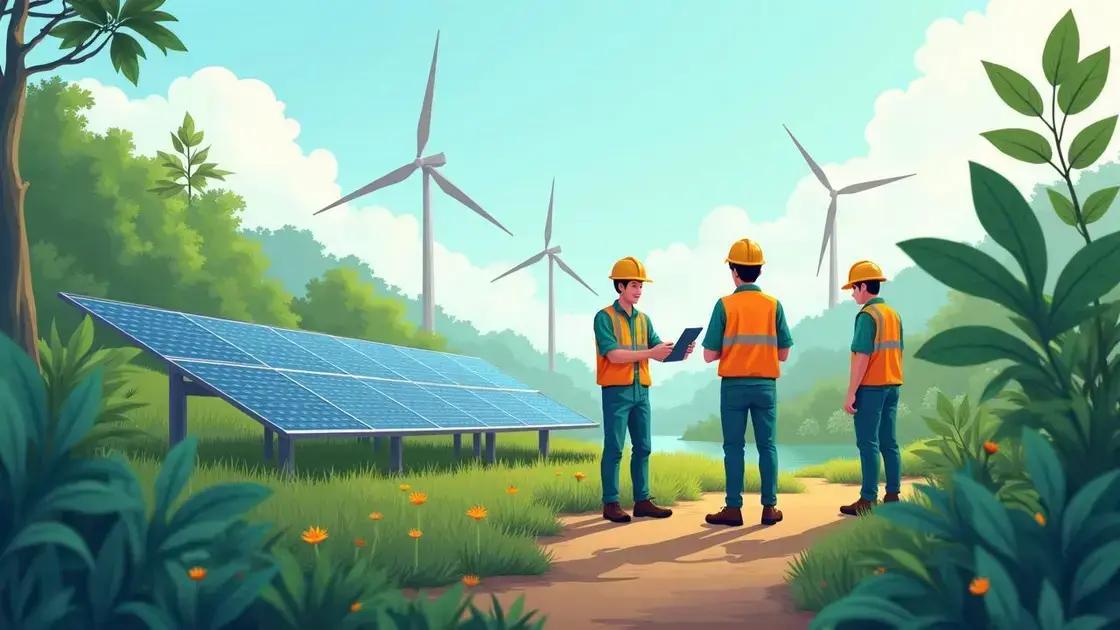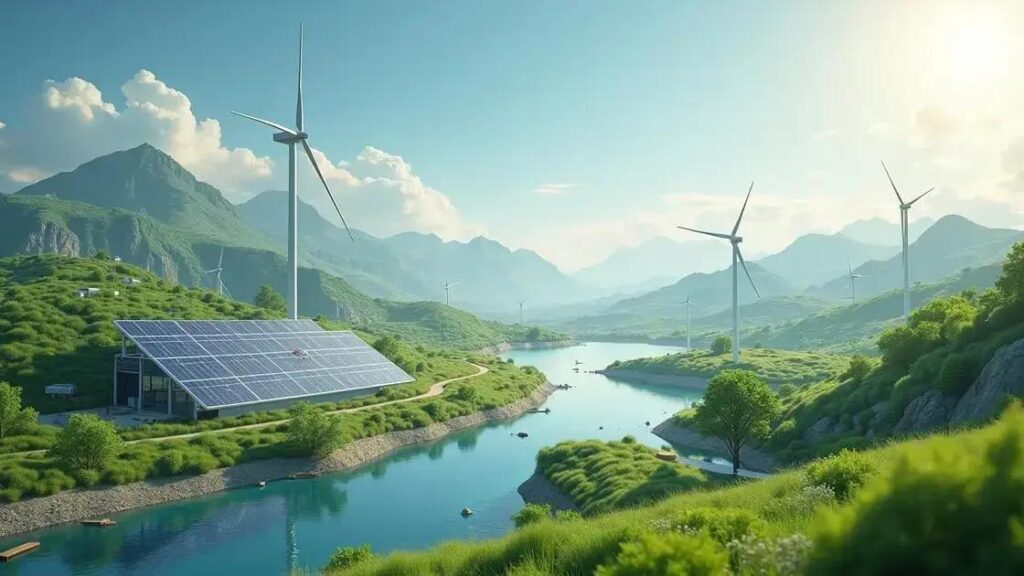Amazonic Power is a renewable energy source derived from the Amazon rainforest that offers numerous benefits, such as reducing carbon emissions, promoting energy independence, and creating job opportunities while implementing safety measures to mitigate environmental risks.
If you’re wondering, “Is Amazonic Power safe?” you’re not alone. Many people are curious about the safety and reliability of new energy sources. In this article, we’ll dive into what Amazonic Power entails, the safety measures in place, and any potential risks you should be aware of. Let’s uncover the truth together!
Understanding Amazonic Power

Amazonic Power is an innovative energy source derived from the unique characteristics of the Amazon rainforest. It aims to harness the natural resources of the Amazon ecosystem, particularly focusing on renewable energy generation. This includes various energy types, such as solar, wind, and hydroelectric power, all designed to produce electricity sustainably.
The Role of the Amazon Rainforest
The Amazon rainforest is often referred to as the lungs of the Earth due to its vast area and the oxygen it produces. By utilizing this natural environment, Amazonic Power captures energy that is abundant and renewable, minimizing the impact on the environment.
How Amazonic Power Works
Amazonic Power involves the installation of energy technologies that convert the natural energy of the Amazon into electricity. For example, solar panels might be set up on available land, while hydroelectric plants can utilize river currents without disrupting the ecosystem. The goal is to create a balanced energy system that prioritizes environmental health.
Advantages of Amazonic Power
One of the key advantages of Amazonic Power is its potential to reduce reliance on fossil fuels. By switching to this renewable energy source, communities can decrease carbon emissions, contributing to a healthier planet. Furthermore, it promotes energy independence, allowing local regions to harness their resources.
In essence, understanding Amazonic Power is crucial for grasping its role in the future of energy. It highlights the importance of sustainability and community involvement in the energy landscape, paving the way for a cleaner and more efficient world.
Safety Measures of Amazonic Power

Ensuring the safety of Amazonic Power is a top priority for developers and stakeholders. Several measures are put in place to safeguard the environment and the communities involved.
Regular Safety Inspections
Infrastructure supporting Amazonic Power undergoes regular safety inspections. This involves checking the condition of solar panels, wind turbines, and hydroelectric systems. Maintaining these installations reduces risks of malfunctions or accidents.
Environmental Impact Assessments
Before any project begins, comprehensive environmental impact assessments are conducted. These assessments evaluate how energy production might affect local wildlife and ecosystems. By doing so, developers can make informed decisions to minimize negative impacts.
Community Training Programs
Community safety is also a focus. Training programs are offered to local residents, informing them about safety procedures and risk management. Knowledge empowers communities to prepare for potential hazards, ensuring their well-being.
Emergency Response Plans
Effective emergency response plans are essential. Every Amazonic Power project includes protocols for dealing with emergencies, such as natural disasters or technical failures. Clear communication and procedures ensure quick and organized responses.
By implementing these safety measures, Amazonic Power aims to provide a reliable energy source while prioritizing the health of the environment and local communities.
Potential Risks and Downsides

Amazonic Power offers many benefits, but it’s essential to acknowledge the potential risks and downsides associated with this energy source.
Environmental Concerns
Even with thorough environmental assessments, ecosystem disruption can still occur. Building energy infrastructure may affect local wildlife and plant life, disrupting habitats and natural processes.
Dependence on Weather Conditions
Amazonic Power relies heavily on renewable resources, which can be unpredictable. For instance, solar energy production is dependent on sunlight, and hydroelectric power is affected by rainfall levels. This variability could lead to inconsistent energy supply.
Initial Investment Costs
While Amazonic Power is designed to be sustainable, the initial investment costs can be high. Establishing the infrastructure requires substantial funding, which may deter local investments or government support.
Community Displacement
Large energy projects may lead to community displacement. If land must be cleared for solar farms or wind turbines, local populations could be affected, leading to social and economic challenges.
These risks highlight the importance of conducting continuous assessments to minimize negative impacts while harnessing the benefits of Amazonic Power.
Benefits of Choosing Amazonic Power

Choosing Amazonic Power offers several significant benefits that can greatly enhance energy sustainability and community welfare.
Renewable Energy Source
Amazonic Power is primarily based on renewable resources, making it a clean alternative to fossil fuels. By harnessing the natural energy of the Amazon, it reduces carbon emissions and helps combat climate change.
Economic Opportunities
Investing in Amazonic Power can create job opportunities in local communities. From construction to maintenance, various positions can help boost the local economy while providing sustainable careers.
Energy Independence
Amazonic Power promotes energy independence. By utilizing local resources, communities can reduce reliance on imported fuels and enhance their energy security.
Promotion of Biodiversity
The development of Amazonic Power promotes biodiversity conservation. By managing energy projects responsibly, developers can help protect the rich ecosystems of the Amazon, ensuring that both energy needs and environmental health are prioritized.
All of these benefits make Amazonic Power an attractive option for communities looking to adopt sustainable energy solutions while supporting environmental goals.
Summarizing the Safety and Benefits of Amazonic Power
In summary, Amazonic Power presents a promising alternative to traditional energy sources. Its reliance on renewable resources ensures a cleaner and more sustainable future, making it a crucial player in combating climate change.
While there are potential risks associated with its implementation, the numerous benefits—including job creation, energy independence, and biodiversity conservation—show that with proper management and safety measures, it can be a wise choice for many communities.
Thus, understanding the safety, advantages, and challenges of Amazonic Power will enable individuals and communities to make informed decisions about their energy usage.
FAQ – Frequently Asked Questions about Amazonic Power
What is Amazonic Power?
Amazonic Power is a renewable energy source derived from the natural resources of the Amazon rainforest, focusing on sustainability and clean energy production.
Is Amazonic Power safe for the environment?
Yes, Amazonic Power emphasizes safety measures such as environmental assessments and regular inspections to minimize negative impacts on ecosystems.
What are the benefits of choosing Amazonic Power?
Benefits include renewable energy generation, job creation, energy independence, and promotion of biodiversity conservation.
What are the potential risks of Amazonic Power?
Potential risks include ecosystem disruption, dependence on weather conditions, initial investment costs, and community displacement.
How can local communities benefit from Amazonic Power?
Local communities can benefit through job creation, economic growth, and an increased sense of energy security.
What safety measures are in place for Amazonic Power projects?
Safety measures include regular safety inspections, environmental impact assessments, community training programs, and emergency response plans.












